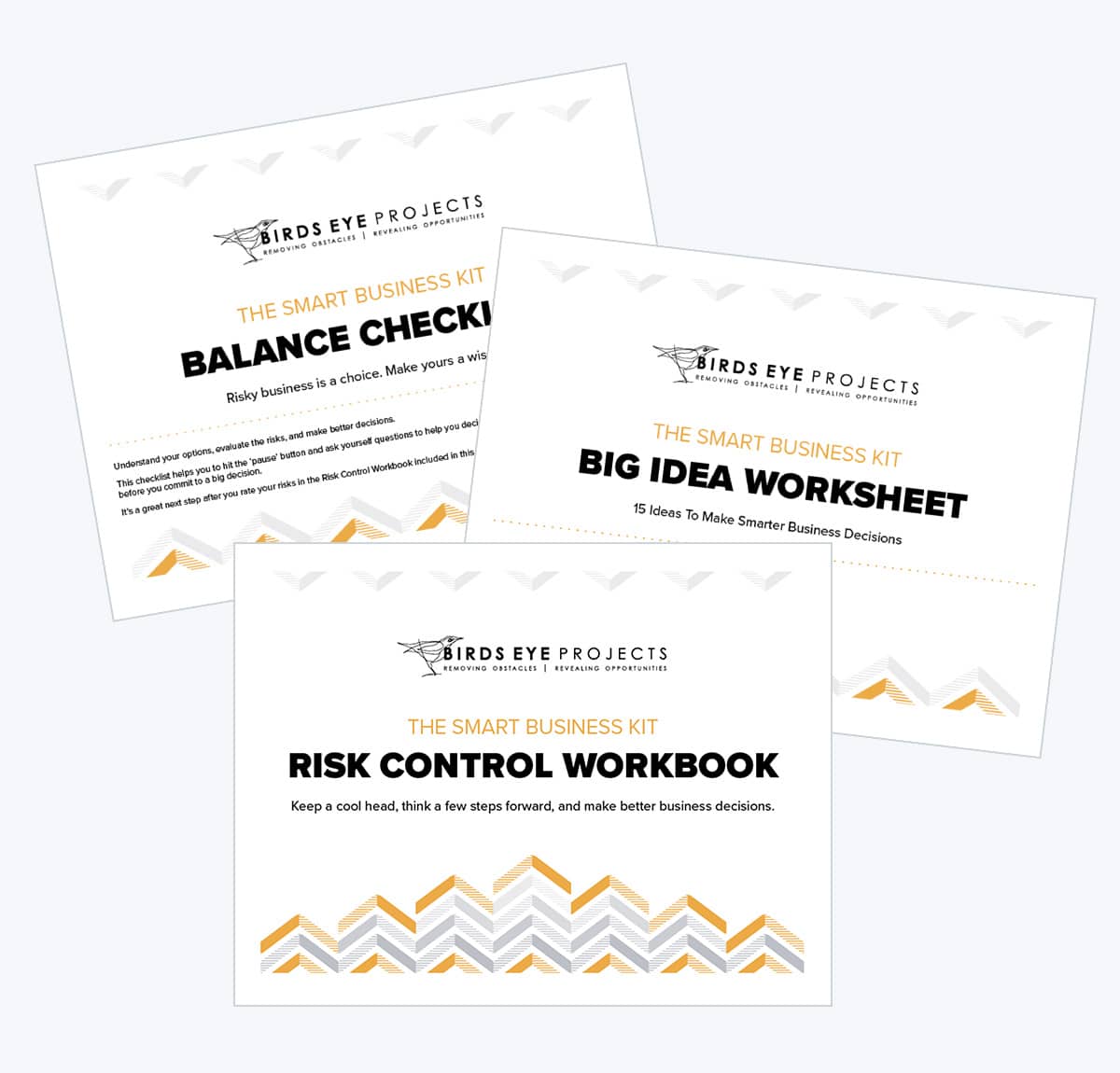What Is Business Analysis?
(*It’s not necessarily a stuffy corporate thing.)
When you’re driving down the road, do you look at the center line, or do you look ahead and check your mirrors?
That’s it in a nutshell. You can stop reading now –
or keep going to get the goods on business analysis.
Framing The Needs
The essence of business analysis is the flexible framework it provides. The activities performed by a business analyst are really just a series of planned steps taken to accomplish the main goal.
The concept of business analysis is not that of a rigid system. It’s an adaptable blueprint that can be applied to many situations.

A cookie-cutter approach has its limitations.
It’s applied the same way each time, with the same narrow perspective and results may vary.
Using a framework to define the objectives, plan the work, assess the impact, and review the options, covers a lot of ground. There’s room to adjust, adapt, and find the best fit for each situation. You’ll notice the difference in the quality of the results.
Planning For Change And Value
First, justify the change.
After validating the needs, and understanding what the options are, their impacts, and outcomes, is there a feasible solution?
Sometimes there is, while other times there will be…but not right now. It could be timing, resources, or other reasons.
You really want to identify this ASAP to avoid watching time and money fly away for no good reason.
Dollars and Sense
In business analysis, everything should have value. Not necessarily dollar value all of the time, but an identifiable contribution toward the objective, big or small.
These can include the people involved, the planning and activities, the research and information collected, the quality of the communication, decisions, resources, processes, and execution.
Ensuring the changes bring value in every decision, and stage of the process, results in a better quality outcome both financially and logistically.
Things don’t just magically transition from old to new. Changes need to be planned based on the immediate lifetime of the project, and in the long term.
Here are some of the factors to consider…
Questions For Now and Later
If you’re still doubting the value of investing in the planning stage, look through the questions listed below. You might find yourself thinking “Yeah, now I get it.”
- How do you smoothly roll out a change from the present to the future?
- Do you change from old to new all at the same time, or phase it in with stages?
- Is any training or preparation needed?
- Do old processes or systems need to be phased out?
- What order and time span should the changes occur in?
- What determines whether the change is 100% complete and no longer in transition?
- How often should it be reviewed in the long term?
- Is scheduled maintenance needed?
- Will it require adjustments or eventual replacement at any point in its lifetime?
Catch my drift?
When these types of questions are asked and answered, you understand your situation and solution scope so much better. It’s the depth of understanding that gives you more insight, more options, and reduces potential risk.
Business Analysis Tools
Like having the right tools for the right job, there are techniques for every need and situation. Ways to collect and evaluate information, engage with participants, ways to visualize, model or demonstrate, and so on.

Remember Mary Poppins’ carpet bag?
She pulled a large floor lamp and folding chair out of it.
That’s the kind of bottomless toolbox business analysts have.
Some of these might be used again and again, with different reasoning and perspective, and others will be more specialized for the business situation, people, need, or industry.
They include ways to understand the clients and all stakeholders involved. Various techniques can be used to collect information, prepare activities, test or research, analyze and inform.
Understanding The Workflow
Taking the time to review all the connecting pieces makes as much sense as sorting a puzzle before trying to put the pieces together.
There’s a logical order of steps that should take place. For those in a hurry to skip from steps 1 to 20, the point is sadly lost. It’s not to say each step takes time, some steps take minutes and ensure nothing is overlooked.
A business, a business culture, its processes, systems, and interactions form a complete ecosystem. When something changes, it’s likely to affect another area, directly or indirectly.
When you understand the workflow, you can better predict the possible outcomes.
Appreciating People and Business Culture
Beings with ideas, personalities, attitudes, emotions… People are complicated!
Especially when they need to work together. Throw some work challenges into the mix, and it could go any number of ways.
Then there’s business culture. Part business environment born from the identity of the organization at large, part collection of minds and hearts working within. This is how the business and people see themselves as a whole, and express themselves as a culture.
Getting Everyone Onboard
Respecting the people and business culture serves a few great purposes.
But you’re saying “Natasha, you can’t please everyone.” I know, bear with me (geez!) First, looking for perfection and 100% consensus is not realistic. Second, what you’re looking for is common ground.
Finding the common ground only happens with respect. For a business, that means listening and communicating clearly and openly. How can people row in the same direction if the business hasn’t clearly explained where it wants to go, or how?
There have been enough challenges in recent years to see what happens when respect disintegrates in society. Pointing out the common ground and common objectives, lays a pathway to reducing conflict and improving collaboration when change is at the forefront.
Many things become easier when you have buy-in from the group. There’s less resistance to change, and more openness to new or unconventional ideas, and different points of view. It opens the door to better collaboration.
Thinking Things Through
It shouldn’t need to be said, but it does. Thinking things through will be one of the first corners cut to save time and money.
It feels slow and arduous to pause, think for a bit and assess the issues and needs. It’s so much more gratifying to jump in with both feet and throw all your resources into a project.
BUT… it’ll bite you.
Understanding, thinking, processing, assessing, evaluating and verifying will save you time and money. They will contribute to making more as well.
This is where you stop to ask: Why?
Providing Information, Clearly
Communication is one of the most important elements in business analysis.
Listening, observing and reporting can affect many activities and outcomes. Information should be shared the best way suited to the people involved and the business.
A large organization with an established hierarchy will likely need details presented formally, and appropriately, based on the recipients’ roles and responsibilities. Likewise with a business requiring strict rules and regulations.
Small businesses and entrepreneurs (or solopreneurs) have a flatter hierarchy, maybe even minimalist. Accordingly, information should be presented differently. This can mean the presentation is less formal, and more succinct.

Information given clearly means it’s provided in the right format, with the details needed.
Not too much, nor too little. Just right.
The main factors in communicating clearly involve adjusting the way information is shared.
The point is not to overload or overwhelm, but to give what is needed to present the details accurately for consideration. In short, you get exactly what you need to make a good decision.
Finally, it also means selecting the means that best fits the recipients, culture, or situation. If a visual diagram or illustration does the job better, that’s what it should be.
Adding Breadth and Depth
Intentionally seeking perspectives from macro to micro is a central principle of business analysis. Understanding both the big picture and granular level of detail keeps everything in focus.
It takes this range of views to see the potential impacts of each decision. These impacts span from the short-term to the long-term, and take the relevance of current and future objectives into consideration.
This nuanced approach helps to prevent sudden issues and changes, reducing day-to-day friction between people, processes, and systems.
Finding The Best Possible Options
Finally, getting to the best possible options means listening to and communicating with many people. It also includes observation, research, testing and collaborating.
With these pieces of the puzzle, learning what’s broken and what’s working well is made all the simpler.
It’s about changing only as much as is necessary and called for. It’s about finding the best fit without over-complicating the process or outcome.
The ABC’s of Business Analysis
Or, the BACCM’s, more accurately. The BA Core Concept Model keeps the priorities in focus at all times and includes Value, Change, Stakeholder, Need, Solution, and Context.
No matter what is happening in the course of business analysis, the core concept model emphasizes the key factors and relationships between them. These are considered in terms of the change required, the context in which they’re applied, and the environment they occur in,
If you made it to the bottom of this long-winded explanation, high-five to you my curious friend! I hope you found it helpful.
Don’t Cut Corners. Make Good Decisions.
To learn more about the factors that can help you to make decisions with peace of mind, sign up for the Smart Business Kit email series which includes helpful worksheets you can download.
MAKE BETTER BUSINESS DECISIONS

Sign up for The Smart Business Kit, a 9-part email series with worksheets, and learn how to make smarter business decisions you can feel good about.
